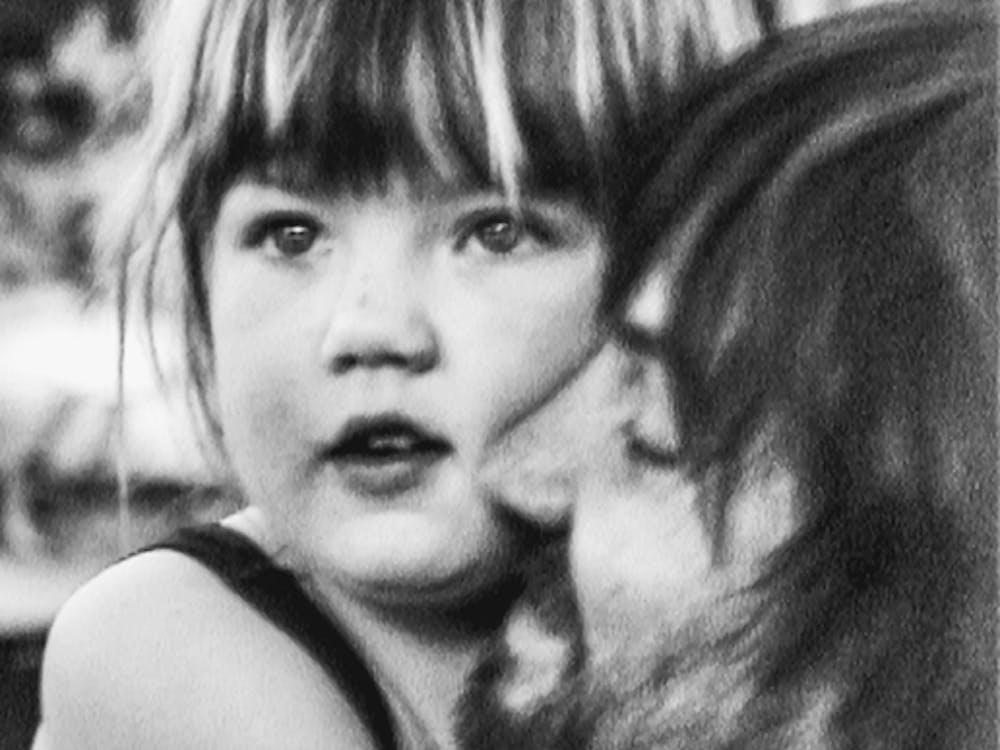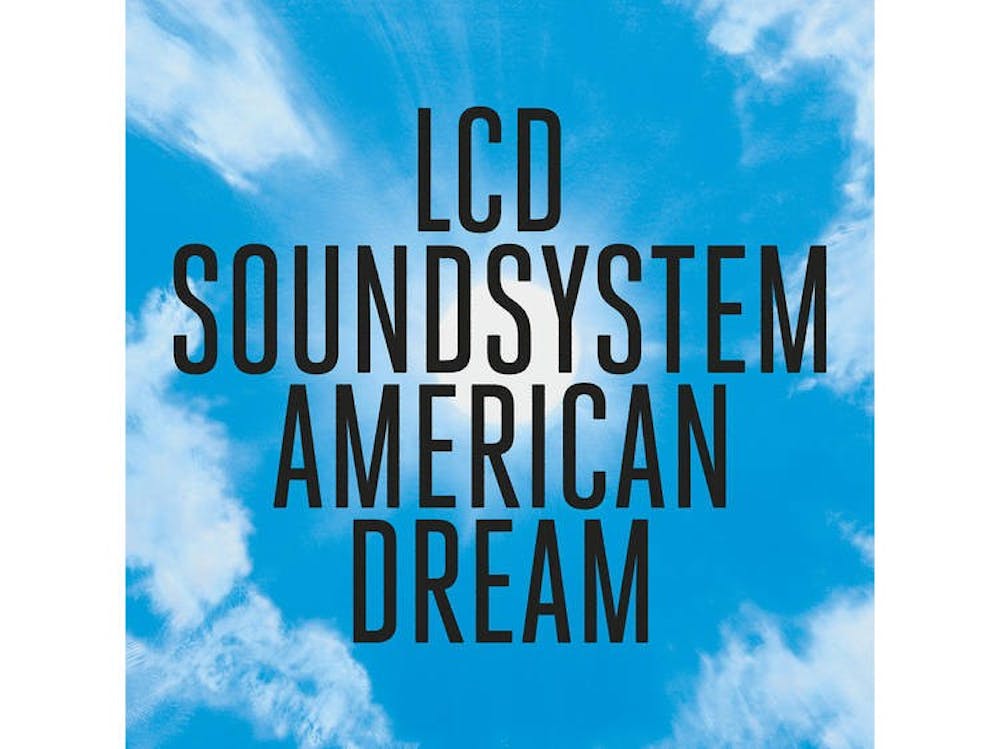It’s hard to say much about LCD Soundsystem that hasn’t already been said. Headed up by producer James Murphy, the band has oft been difficult to pinpoint for even the wittiest, snobbiest journalists. LCD Soundsystem cannot be made the subject of the elitist allusions and ironically cliché lines of text that would be appropriate for any other band, because that would fall right into the criticisms of criticism itself that Murphy wrote about in his past songs. But it’s also because this band represents more than a band; they are also a movement, a scene, an identity, and yes, a return.
American Dream is possibly the most fitting title for an album so pumped full of regret, loss, and gilded nostalgia. It must be said, American Dream is several leagues away from Sound of Silver, This Is Happening, and even their self-titled record. This album is slower, more calculated. American Dream is a record that must be judged after several listens. The layers and complexities behind this beast are truly remarkable. For the lack of revelrous danceable beats and outlined youth, Murphy more than makes up for it with the amount of mournful personality and vulnerability that he trickles on to the audience. As usual, Murphy has pressed just the right buttons and moved the LCD needle just enough to make something both accessible and deeply artistic.
“You can synthesize, don’t it make you feel alive?”
A recurring presence on this record is Murphy’s scattered and sometimes muttered vocals. These elements paired with the drone-like instrumentation give the record an almost robotic, industrial feel. The zenith of this token droneism can be found on the tracks “I Used To” and “Black Screen.” In both instances, Murphy’s backing synths are locked in a controlled, but ominous progression that further enforces the glum themes of both songs.
On previous LCD records the guitar has been used sparingly. This is also the case on the outfit’s fourth release. “Emotional Haircut” is the only track on the record that features some semblance of a driving guitar.
The more textured electronic instrumentation allows for more introspection and realism for the record. Instead of the classic electric guitar, bass guitar, and drums, LCD uses perfectly coded synths to drive home the brooding and marauding messages of the album.
Percussively speaking, the record is quite danceable. “Tonite”, the most vintage LCD cut off the record, features an earworm of a beat that pairs perfectly with the song’s overall meaning and aesthetic. In most cases though, Murphy uses percussion to almost act as a sort of heartbeat or constant to remind himself and listeners that time moves on, and that someday we won’t be as fervorous or “cool” as we used to be.
From Goldie to Bowie
James Murphy seems to be fascinated with the idea of aging. “Losing My Edge”, “All My Friends” and “All I Want” are past standouts that delve deeply in the idea of getting older and learning to live with your new inhibitions. American Dream expands on this idea to unforeseen heights.
The most vivid documentation of Murphy’s thoughts on aging can be found on the track “American Dream.” The song tells the story of someone waking up at someone else’s house whom they had had a one night stand with. Unfortunately, as the protagonist is preparing for the “walk of shame” they slowly begin to realize how much older and seemingly disconnected they now are. The one night stand serves as a sort of reminder of what they would do somewhat regularly in their heyday, whereas now it is something both rare and exciting, and depressing and regrettable.
“How Do You Sleep” is the most pointed track of Murphy’s to date. The artfully clunky experience finds Murphy riffing on Tim Goldsworthy, his former friend and cofounder of DFA, the record label that the pair started in the late ‘90s.
The exodus of Goldsworthy is a widely known story in the indie sphere; feeling forgotten and disrespected by Murphy, Goldsworthy abruptly left DFA and LCD Soundsystem just at the onset without any sort of goodbye or explanation. In ensuing years, Murphy and other DFA execs have taken Goldsworthy to court for misappropriation of company funds.
Aside from the legal-laced lyrics, the track serves as a sort of window into the younger Murphy. At one time, Tim and James were close friends, both highly talented and frustrated musicians trying to carve out a niche in the NYC underground.
“Black Screen” is the most haunting and somber track on the entire record. The consensus is that “Black Screen”, the final track on the record, is a documentation of James Murphy’s relationship with David Bowie. Sound-wise, the track is slow, and bereft of vocals.
The scattered vocals deal with Murphy’s nervousness at working with Bowie, his childlike admiration of him, and how he wishes he could have gotten to know him at a deeper level before his passing. It is also important to note that Bowie was one of the main driving forces behind getting Murphy to reunite the band. (The line “you should be uncomfortable” from “Other Voices” is a direct quote from their conversations.)
Other themes of the record deal with the blandness of the mainstream music industry (“Tonite”), depression (“Other Voices”), and the heavy decision of breaking up, and reforming LCD Soundsystem (“Oh Baby”, “Emotional Haircut”).
The magic of Murphy
Despite the name, LCD Soundsystem has often felt like a one-man project. James Murphy’s notorious controlling tendencies, coupled with the fact that in recording he often plays all of the instruments, isn’t something to be scoffed at or taken lightly.
The band’s previous releases have shown how prodigious a musician James Murphy actually is. In many cases, he is the primary recorded vocalist, guitarist, drummer, and tuner of all synthesizers. After six years of dormancy, Murphy’s skills have enhanced, and become more specialized.
Murphy wrote these songs to help shine a light on his awkward, yet accessible voice. Knowing his vocal limits, Murphy utilized the perfect amount of vocoder and reverb to help add depth and context to his slightly nontraditional quips.
Synthetically, Murphy fell back on krautrock-reminiscent progressions and influences. Tracks like “How Can You Sleep” and “Emotional Haircut” find extremely effective and sneaky progressions purposed through ever-present synths.
Though Nancy and Gavin and the rest of the band aren’t as apparent as on past records, Murphy’s perfectionist zeal and cultured toolbox make this record another classic for the Brooklyn band and further reinforce the unmistakable genius of its frontman.
Top tracks:
“Oh Baby”
“How Can You Sleep”
“American Dream”
“Emotional Haircut”
“Black Screen”
Other members of the American Dream family:
Talking Heads – Fear of Music
Joy Division – Unknown Pleasures
Sofi Tucker – Soft Animals

All images from Pitchfork
For more entertainment related content, visit us at Byte Bsu!



















